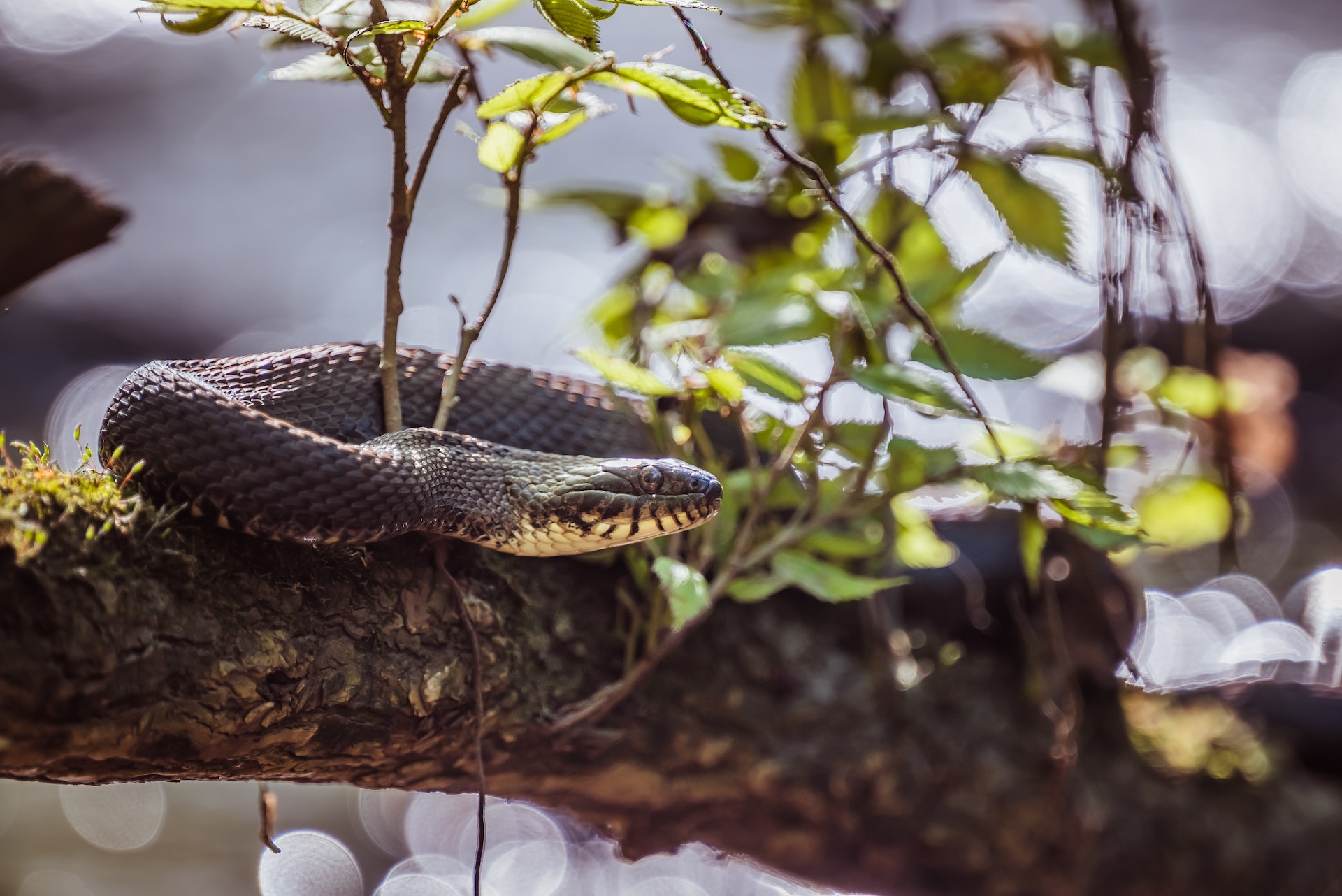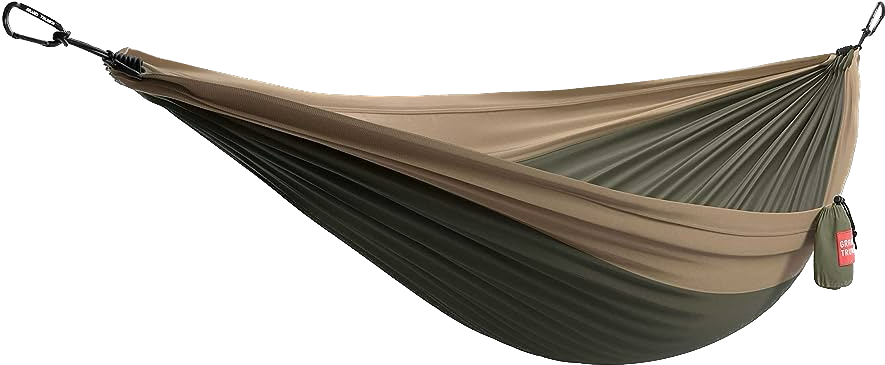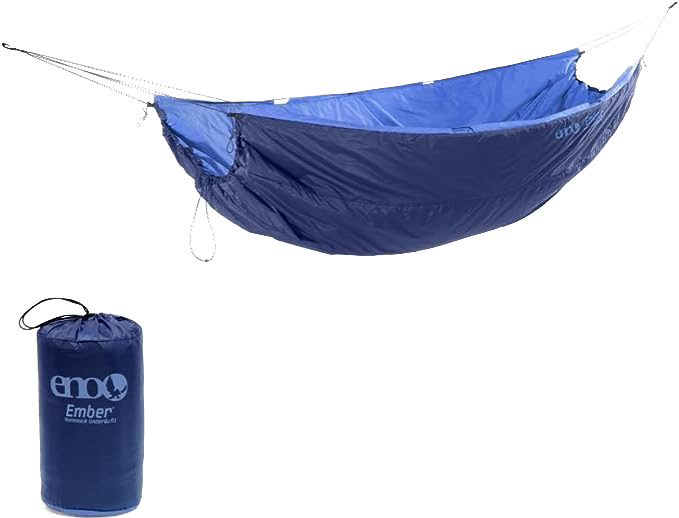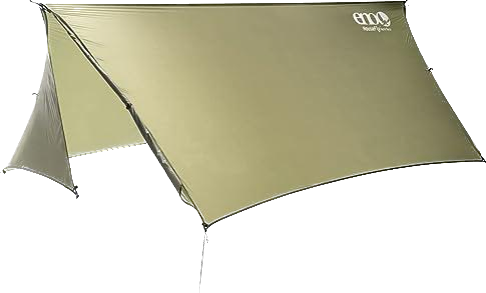Hammock camping is a fun and enjoyable way to spend time outdoors, but it’s important to be aware of potential dangers, such as snakes. Snakes can be found in many different environments, and while they are often harmless, some species can be dangerous and even deadly. In this blog post, we will discuss some tips for avoiding snakes while hammock camping.
While possible, snakes are very unlikely to climb and get into a person’s hammock. Snakes are typically found slithering around on the ground looking for a heat source and food rather than climbing up posts or hammocks.
Being above the ground is one of the great advantages of a hammock over a tent. By doing so you avoid any snakes and little critters roaming around. In the wild, you’ll most likely run into snakes on the ground – especially when you’re in the mountains or around the desert. You can follow these simple steps to better ensure your safety and lower your chances of running into a snake while hammocking.
- How to Avoid Snakes while Hammocking
- Hanging up your gear
- Hang up your backpack or bag
Because most snakes are primarily found on the ground, one important but overlooked step is to hang up your backpack or bag off the ground. When snakes are moving around they are generally looking for food or a safe place to hide. By hanging your backpack you remove the chance that a snake could crawl under or into your gear to hide.
Find a safe place for your shoes

Similar to your hanging up your backpack or bag, you’ll want to find a safe secure place for your shoes. While shoes can be a small place for a snake to hide, other animals or insects could also find their way into your shoes. Hence, it’s always a good idea to find a safe spot for them. Here are 3 options for storing your shoes when hammocking.
- Get a ground cloth and set your shoes below your hammock. A ground cloth is a large cloth that hammocks and campers use to provide a safe spot for their gear and equipment. I recommend looking around your hammock and finding a place where the ground is free of tall grass and leaves. You can then clear out a spot, lay down a ground cloth, and have a spot to leave your shoes/gear – ideally somewhere near your hammock or cover so they don’t get wet if it rains.
- Obviously, your shoes are still on the ground and a wandering critter could find your shoes and make a new home. So if you go with this method, always shake out your shoes before putting them on.
- Prop up your shoes on sticks. If you’re out hammocking and have limited gear, this may be the best option for you. Simply, you’ll want to find a couple of medium-sized sticks and stick them in the ground. The idea is you can hang your shoes on the ends of the stick rather than setting them on the ground. While this is not a perfect solution, it is much better than just leaving your shoes on the ground.
- If the ground is hard or if the sticks are too wide, I found it easy to surround each stick with a pile of rocks to support the stick and shoe.
- Hang your shoes from your hammock. This is the preferred choice for anyone wanting to protect their shoes from any little critters roaming around the ground below. To hang your shoes, use an extra clip to link your shoes together and then hang it from your ridgeline or straps. By doing so, your shoes should suspend in the air above the ground. Thus avoiding any chance of snakes or unwanted visitors sneaking into your shoes.
Pro tip: If you do choose this method, be sure to have a drip line or knot so if it rains water will go down the drip line/knot rather than directly into your shoes.
Have a secure place for food
It’s essential that you have a safe and secure place to store any food you bring. Food can often attract wildlife, usually small critters, and rodents. In turn, these animals can attract natural predators – including snakes. I recommend storing food in a hard case cooler or even storing food in the car. This will ensure little critters and snakes are not attracted to your hammock site.
Get a Hammock that has a Cover
For those that are still concerned about snakes crawling into their hammock, I recommend getting a hammock that has a cover or is fully enclosed. This Hennessey hammock is fully enclosed and the bottom entry closes automatically with velcro after you climb inside. There is practically no way for a climbing snake to enter.
How common are snakes in your area?
One of the first steps to avoiding snakes and other dangerous wildlife is to research and understand what wildlife lives in your local area. In some places, snakes are found only on the ground, while in other areas snakes may be found climbing in trees. By researching and understanding the animals in your hammocking destination, you can plan and make accommodations to limit your snake encounters.
One thing to consider is food sources for snakes. If your neighborhood or local area has a large population of mice or squirrels, this may attract more snakes. I recommend taking additional steps to help scare away or limit the number of rodents or squirrels in your hammocking areas.
One common tree snake in the U.S. is the Brown Tree Snake. These snakes do live in the US and can be found climbing trees and other items. While it is very unlikely snakes will find their way into your hammock, it is good to be aware of their prevalence and take steps to minimize the chance of an encounter.
How to Minimize Your Snake Encounters
Clean and Wash Your Hammock
One easy thing everyone can do is clean their hammocks. Often hammocks can be neglected and never cleaned after years of use. The smells and any food remnants can attract friendly critters which in turn can attract snakes and other predators. I highly recommend cleaning your hammock every few months or so to ensure nothing is being attracted to your hammock while you’re relaxing in it.
Explore Your Surroundings for Clues
In some areas, snakes are more prevalent and active. By looking for potential clues you can recognize any warning signs and move your hammock accordingly. Some of these warning signs would include:
- Snake holes
- Rodent or other small animal life
- Tree life and activity above
- Game trails
- Animal poop
The ideal spot to hammock is a place where you can make a minimal impact on nature and where nature will have minimal impact on you. Avoid busier locations and areas where wildlife appears to be most active. This will not only help you avoid snakes but keep you safe from all wildlife while in your hammock.
Avoid tall grass and leaves
If you can, try to set up your hammock in an area where the ground is cleared from leaves and tall grass. While it is unlikely a snake could climb up to reach you, it could easily be camouflaged with the ground or hiding in grass or leaves. Thus, it could be very easy for someone to step on a snake without knowing it was there.
Even if the ground below isn’t perfectly clear, knowing what is below you and your hammock will ensure your safety as you get in and out of your hammock.
Conclusion
In conclusion, hammock enthusiasts should feel safe from snakes lying in their hammocks. There are several steps anyone can take to minimize their encounters with snakes and their impact on the local environment. Nonetheless, if your buddies see this article, you might expect to see some rubber snakes slipped into your hammock on the next camping trip.



 Hello there, we're Vira Outdoors!
Hello there, we're Vira Outdoors!

